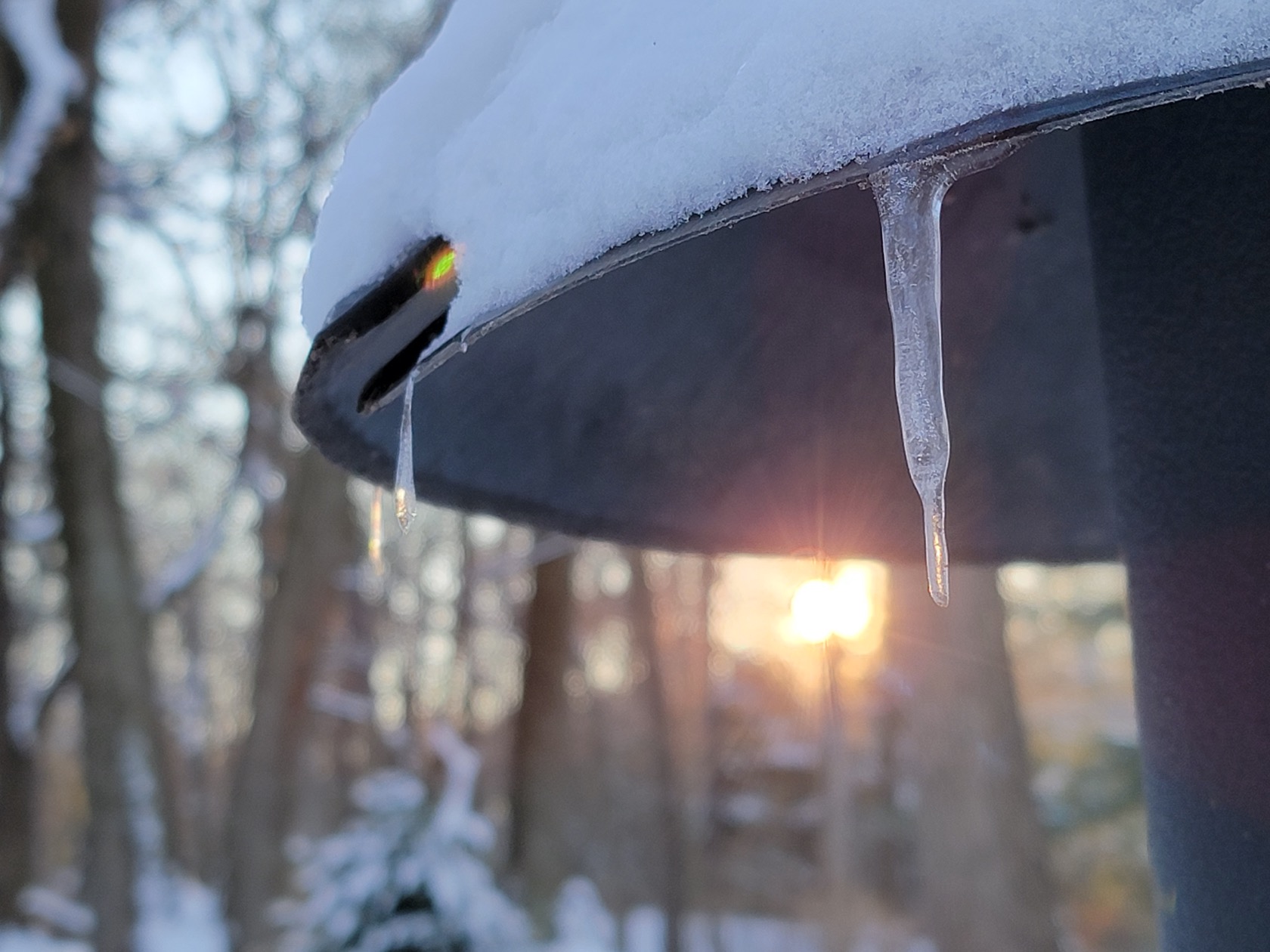Samsung Galaxy S21 Ultra Review - Lower Price Brings Tougher Decisions
- Fantastic 120Hz display makes no resolution compromise
- 108MP camera is capable of great photos
- More affordable than last year's flagship phone
- Potent performance and long battery life
- S Pen functionality is a welcome addition from Galaxy Note
- No microSD, no Samsung Pay MST, and slower charging than the S20 Ultra
- 100x Space Zoom still feels like a gimmick
- S Pen implementation feels half-hearted
Samsung's Galaxy S21 Ultra is more affordable than last year's flagship, has more cameras, and adds an S Pen: on paper, at least, what's not to love? Setting the bar for smartphones in 2021, the daddy of the currently three-strong Galaxy S21 family promises more of that monstrously effective Samsung recipe: heap on the features until there really is something for everyone. Still, for all its merits, it's difficult not to see the Galaxy S21 Ultra as the evolutionary pinnacle of a species set to be replaced.
Like with the Galaxy Note 20 Ultra, there's a sense that we're butting up against the limits of what Samsung can do with a good old-fashioned rectangular slab. As I said about last year's Note flagship, the next significant step feels like it has to be foldables. If anything, the Galaxy S21 Ultra has only cemented that opinion.
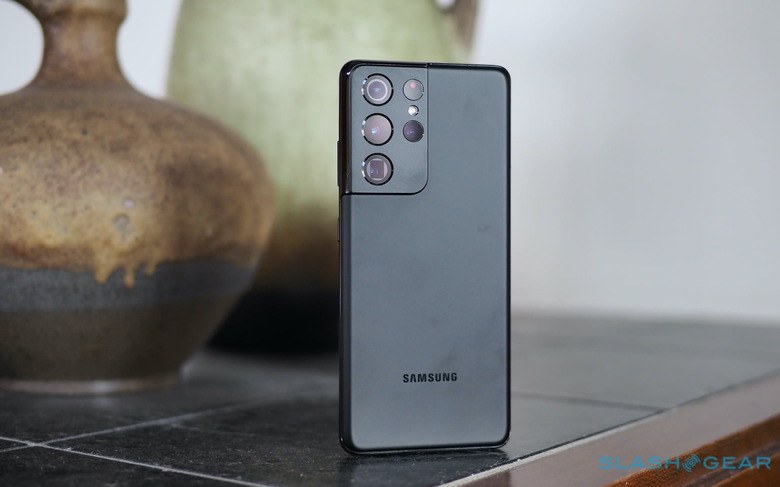
Samsung's revamped industrial design is both familiar and new. The camera sensors are clustered further in the upper rear corner, their assembly still protruding significantly but now integrated into the metal frame of the phone. It's still not exactly sleek – and it leaves the top left corner looking positively chunky – but I prefer it to the Galaxy S20 Ultra's "saltine cracker" bulge.
The matte black body is definitely sober, and while there'll be a silver Galaxy S21 Ultra available alongside it, Samsung keeps the more interesting finishes – titanium, navy, and brown – to itself. If you want one of those you'll have to go direct to Samsung, too, and wait longer since they're made to order. Only those buying the more affordable Galaxy S21 models get brighter hues like red, which I think is a shame.
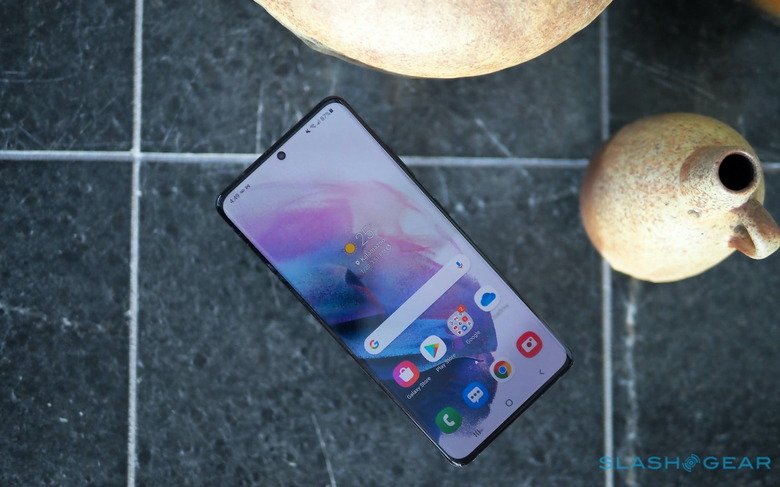
As with its predecessor, it's a big phone. One-handed use is effectively impossible unless everything you want to tap is in the bottom half of the display. The 6.8-inch panel is a crisp QHD+ resolution, but the best news is that it now supports a 120Hz refresh rate at that maximum resolution: the S20 Ultra forced you to pick between the best resolution or the best refresh speed. Samsung actually adjusts the refresh dynamically – down to as low as 10Hz – depending on what's on-screen, to tame the hit on battery life.
It's a lovely AMOLED panel, no surprise there, and the Snapdragon 888 chipset isn't short on speed either. Courting maximum favor, Samsung sent reviewers the top-spec version, with 16GB of RAM along with 512GB of storage, retailing for a heady $1,379.99. More affordable versions have 12GB of RAM and either 128GB ($1,199.99) or 256GB ($1,249.99) of storage. Absent this year is a microSD card slot, which you'll either be furious about or – Samsung believes more likely – not notice.

Similarly missing is a charger in the box. The Galaxy S21 Ultra's 5,000 mAh battery supports 25W wired fast charging – down from 45W on the S20 Ultra – or 15W wireless fast charging, but Samsung figures you'll probably have your own power adapter by now. You do get a USB-C charging cable, at least. Again, how infuriating you find all this will probably vary, though it's worth noting that in recent years Samsung didn't even include the most potent charger its phones supported in the box.
You won't be surprised to hear that I haven't reached the limits of the Snapdragon 888 and all that memory: apps just fly along, keep chugging away in the background with no need for Android to prematurely close them, and generally performance is as silky as the 120Hz screen. You'll also probably not be surprised that I haven't managed to find a mmWave network to test the Galaxy S21 Ultra's fastest 5G support out. The far more ubiquitous Sub-6 GHz is speedy, though, and there's also WiFi 6E support if you have a cutting-edge router.
Cameras
No surprise, that big camera bulge is full of sensors. For 2021, Samsung offers a 108-megapixel wide camera with phase detection autofocus, optical image stabilization (OIS), and an f/1.8 lens. It's paired with a 12-megapixel Dual Pixel ultra-wide with a 120-degree field of view, and not one but two telephoto lenses, both with 10-megapixel sensors. The first is a 3x optical zoom, the second a 10x zoom, both with OIS. Finally, there's a laser autofocus sensor and an LED flash.
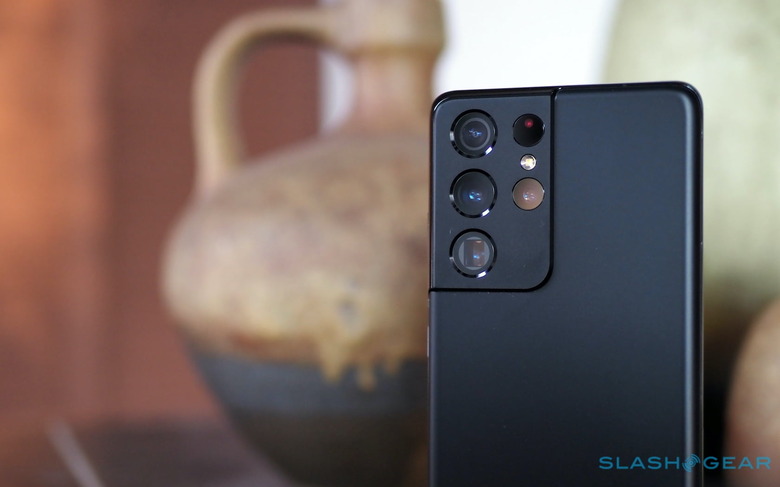
The primary camera uses nona-binning, effectively combining data from clusters of pixels for a 12-megapixel final image. You can, if you prefer more detail, switch to 108-megapixel mode. There's a 12-bit RAW option in Samsung's Pro camera mode, too.
As with last year's flagship, there's a headline-grabbing 100X Space Zoom on the Galaxy S21 Ultra. That combines data from the two telephoto sensors with some cropping and AI-powered massaging to get you up close. The differences for 2021, Samsung says, are that the Space Zoom should be less shaky and thus easier to frame, and that it should produce crisper, more usable results.
Quite frankly, the Galaxy S20 Ultra's 100x zoom was a gimmick, its pictures effectively unusable. First-impressions of the S21 Ultra are more favorable, with a noticeable improvement in shake reduction. Actually getting a shot lined up at maximum magnification is definitely easier this time around, though moving subjects can still be problematic.
The results still feel more gimmick than anything else, however. Better than the previous-gen, sure, but I still can't imagine a time when I'd actually want to keep and share the images that Space Zoom products at full whack. You can see the loss in quality as the S21 Ultra goes from wide-open to 100x zoom in the gallery above.
It's much better at lower magnifications. 10x and even 30x zoom are unexpectedly usable, as long as you don't expect the sort of crispness and clarity you'd get with a dedicated telephoto lens and a mirrorless body. What's actually going on in terms of which sensor and lens are being used, though, isn't necessarily as obvious as you'd think: sometimes, the Galaxy S21 Ultra will actually opt to use its 108-megapixel sensor and crop in, rather than one of the telephoto lenses, particularly if you've pinch-zoomed rather than specifically selected one of the camera shortcuts.
Generally, I'd say the results are much in line with what last year's Galaxy Note 20 Ultra achieved, with refinements. That's no bad thing – colors are generally accurate and show a little less of that historic Samsung exaggeration, and the white balance is good – though the flip side is that some of the detail can be softer than it should be. Point the Galaxy S21 Ultra directly into sunlight and it handles that well, though at times the HDR can be heavy-handed.
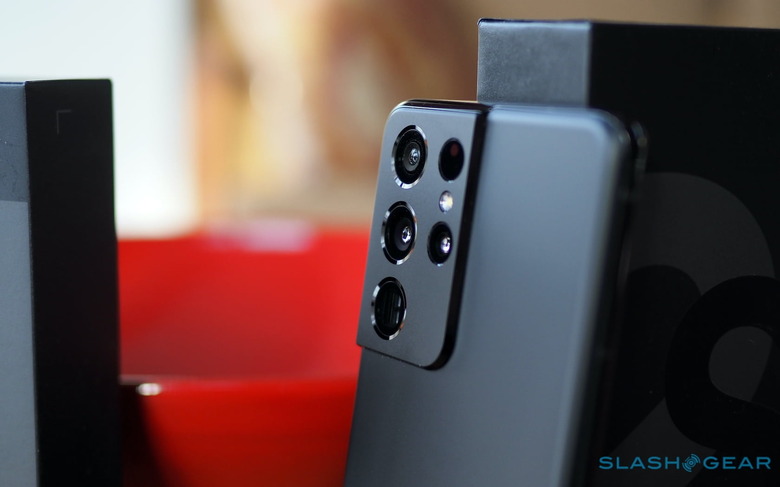
For video, there's up to 8K24 support though not for every sensor. If you want the same quality out of each camera – front and rear – you'll need to switch to 4K60 instead. That's how Samsung makes the most of its new Director's View, where you get a preview of each camera's perspective while you're recording, can tap between them in turn, and the final footage uses only the view you selected at each point. Vlogger View splits the screen to include both the rear camera's view and that of the 40-megapixel selfie camera.
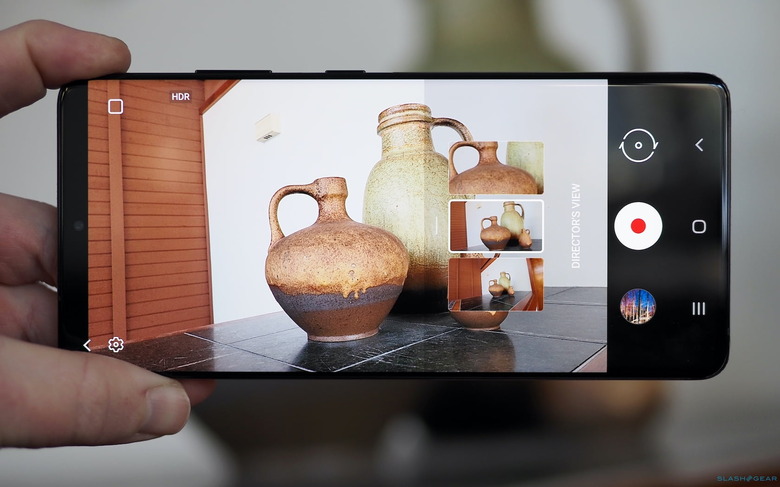
As for Night Mode, Samsung combines its wide-open main sensor with AI to drag more light out of each scene. It works well for lifting brightness, though there's less clarity than I'd expect to see compared to, say, a Pixel 5's night shots.
S Pen
The Galaxy S21 Ultra is the first S Series phone to support Samsung's S Pen, but don't expect Note-style functionality, at least not initially. The $39.99 stylus is sold separately, and honestly the experience overall feels similarly bolted-on right now. What it does is fine, but this isn't the blending of Note and S we perhaps expected it to be.
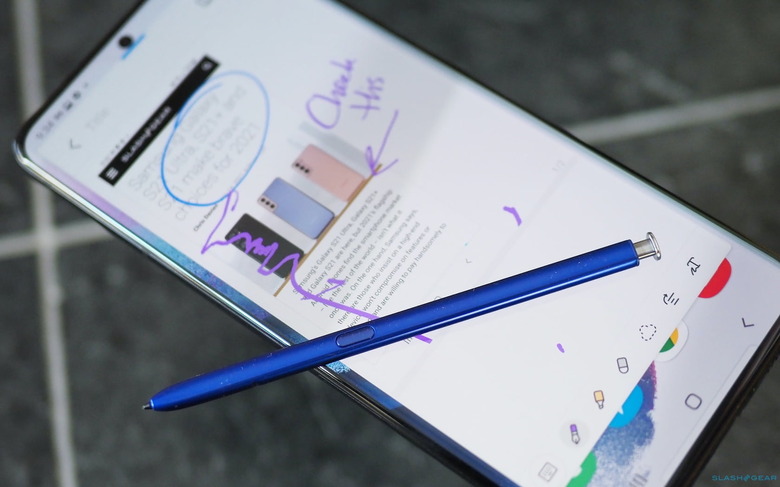
What you get is handwriting, sketching, and annotation support, with Samsung sandwiching a Wacom digitizer into the Galaxy S21 Ultra's display and preloading its Samsung Notes and PENUP apps. You can use basically any Wacom-compatible pen, whether from a previous Note, Samsung's S21 Ultra-specific accessories, or one from a third-party. I used an older Note S Pen and the writing experience is pretty much what you got from a recent Note phone.
What Samsung hasn't included – yet – is Bluetooth support. In recent years, the Note's S Pen has become a remote control as much as a stylus, supporting remote camera operation, magic-wand-style shortcuts when you wave it, and more. That's not something the Galaxy S21 Ultra can do: you get the regular side-button for contextual menus as you tap the screen, and that's it.
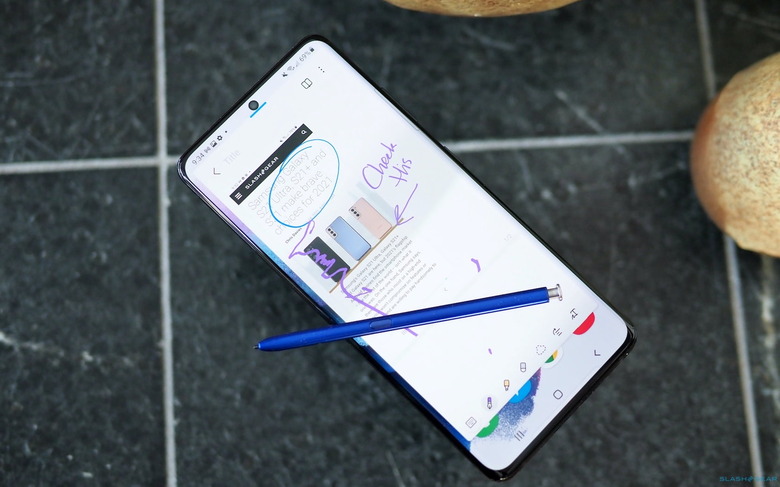
Lending to the confusion, Samsung plans to add more features later, with an enhanced S Pen, but that won't be compatible with the Bluetooth S Pen from the Note series: you'll need an S21 Ultra-specific one. Nor is there a place within the phone to actually store the stylus: while the Note has a little silo for safe-keeping, Samsung sells a case with an S Pen slot if you want that. Or, since the pen doesn't actually need a battery or charging, you can just put it in your pocket.
Battery, UWB, and Samsung Pay
With a 5,000 mAh battery I expected a full day's use from a charge, and sure enough the Galaxy S21 Ultra delivered. I suspect the adaptive refresh helped there: you can, if you prefer, overrule that setting and lock it to 60Hz, but I don't think you should. Not only is the speedy screen one of the phone's biggest charms, there's also the potential that – since it can drop its rate down to as little as 10Hz – it could actually be more frugal than the fixed refresh mode, depending on which apps you use.
Some of Samsung's other changes are small but meaningful. The in-display fingerprint sensor has a larger area in which to press, for example, which makes lining up your finger easier. Peak display brightness is now 1,500 nits, which makes outdoor visibility no problem, but arguably just as important is the fact you can crank the brightness down very low, too, to avoid eye-strain in darker conditions.
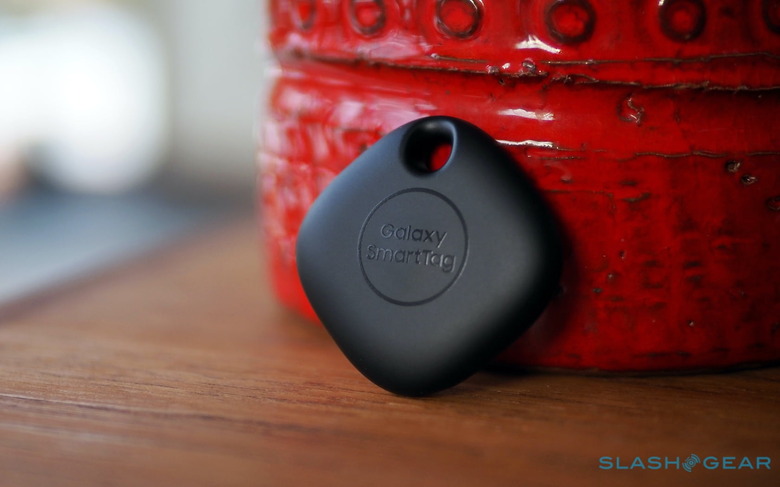
The Galaxy S21 Ultra (and the Galaxy S21+ though not the regular S21) includes Ultra-Wideband, or UWB. You could think of it as "Bluetooth but with direction": basically, it will allow the phones to localize compatible devices nearby. Eventually that'll include the Galaxy SmartTag+ (though the initial Galaxy SmartTag is Bluetooth-only; we'll need to wait until later in the year for the UWB version) or even the door of your car.
Gone, though, is MST support for Samsung Pay. That's the clever tech by which the payment system emulated a magnetic stripe credit or debit card, for point-of-sale terminals without NFC support. It's not something I relied upon but, like the missing microSD slot, it could be a deal-breaker for some.
Samsung Galaxy S21 Ultra Verdict
For the past few years, there's definitely been a theme of "steady refinement" among Samsung's flagship phones. In some ways, the Galaxy S21 Ultra upends that, though not always like you might expect. The most expensive Galaxy S device is $200 cheaper than its predecessor was, and Samsung has pared back some old features while adding new.
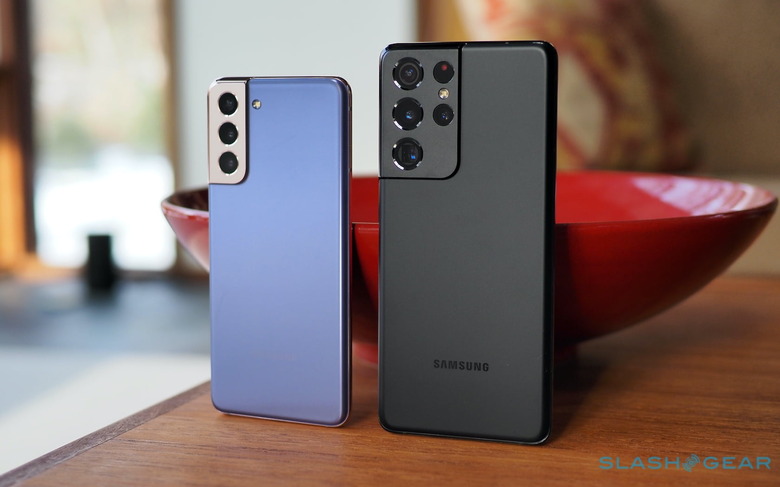
You get more cameras but no Samsung Pay MST or microSD slot; S Pen support but slower wired charging. In some areas the decisions make great sense – I love the idea of really future-proofing a phone you might have for 3 years by loading up the RAM – but elsewhere, like the stylus implementation, Samsung's efforts feel half-baked. For a company which used to be known for its "everything and the kitchen sink" approach, this is a more curated Galaxy device, and those decisions aren't going to please everybody.
On balance, though, I like Samsung's recipe here. Look beyond the gimmicks like Space Zoom and the Galaxy S21 Ultra takes great photos, is powerful, has a fantastic display, and adds in support for popular – if niche – accessories like the S Pen. That it's cheaper out of the gate than before is a welcome bonus.
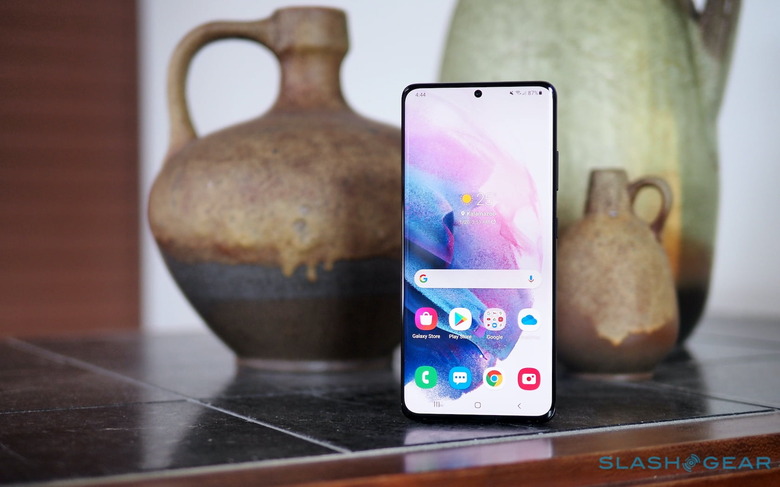
Of course, the challenge is that the even more affordable versions of the Galaxy S21 family skip those gimmicks too: I still think 2021's pick of Samsung's new flagships is likely to be one of the Ultra's cheaper siblings, even as it makes its case for the Android fan who wants it all. Beyond that, it feels like the Galaxy S21 Ultra brings us to a cleft in the road. For four-figure smartphones to truly earn a place in our pocket, they're going to need to be revolutionary rather than evolutionary, and recipe refinement alone is no longer enough.












